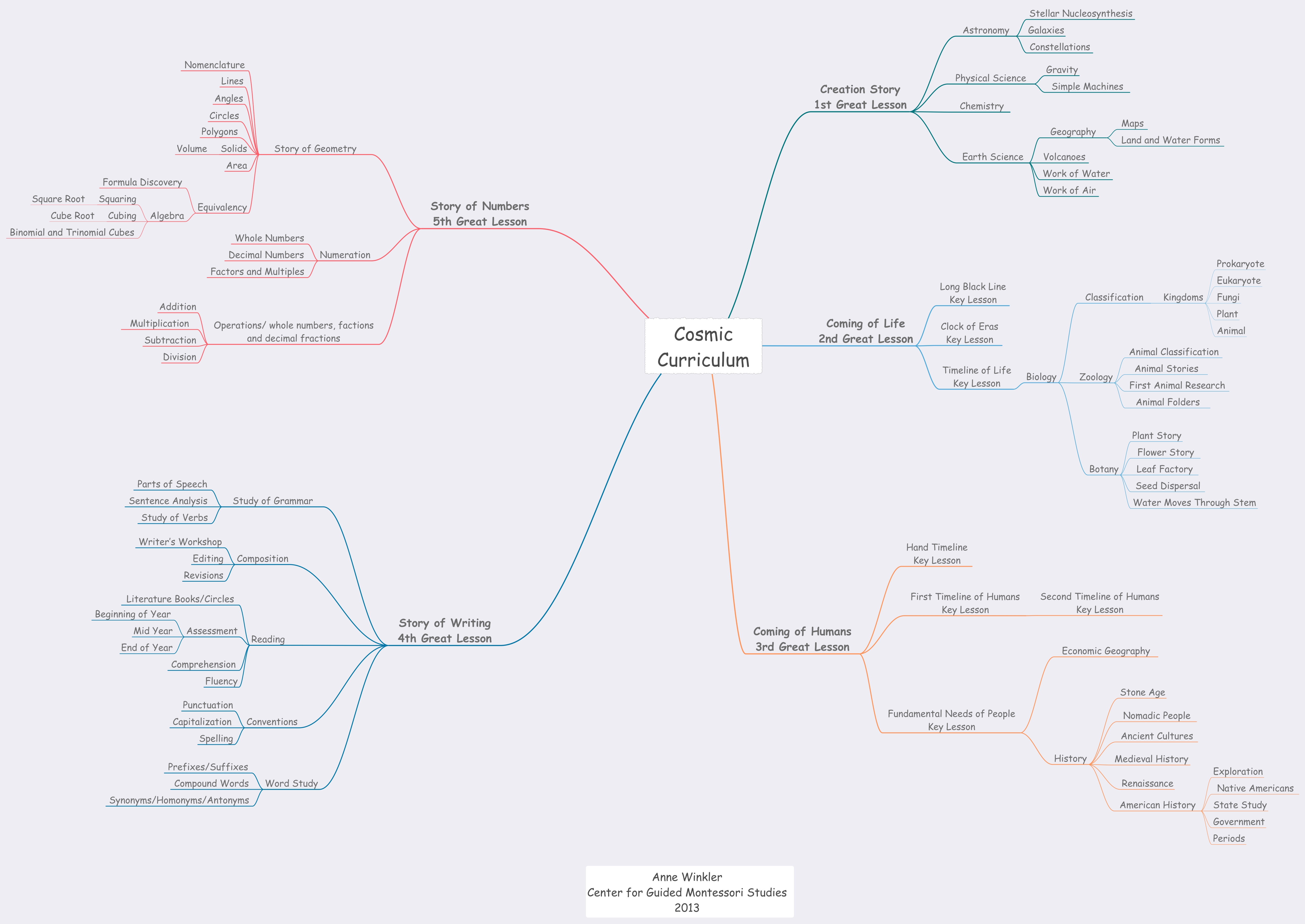Faculty Focus is an ongoing series, featuring articles written by Heartwood’s own panel of experts. This installment comes from Lower Elementary lead Bridget Dickerson.
In their book Children of the Universe, Montessorians Michael and D’Neil Duffy sum up the purpose of Cosmic Education neatly: “This six-year Montessori experience gives elementary students opportunities to appreciate their roots in the universe, to sense their place in its context, and to embrace the role this defines for their lives.”
Sowing Seeds of Knowledge
We lay the groundwork for Cosmic Education in our Early Childhood classrooms by helping children feel close to and connected with nature and the natural world. Children spend time outside, which connects them in a physical way to life itself as it grows all around them. Inside, materials incorporate the natural world as much as possible with rocks, plants, flowers, water, wood and even sand.
We explore the origins of these materials and connect them to the Earth. The natural world is part of the sensorial experience — tracing flowers, creating maps, and learning about Earth’s place in the universe, through becoming the planets and stars in a living solar system. All of this serves to prepare the child for the elementary classroom, where the experiences they have absorbed will become part of their growing imaginations, as they wonder about the part they play.
Big Questions, Big Answers
Children come into the elementary classroom ready to learn and acquire a cultural understanding of their world. Developmentally, they want to know the reasons why things happen, and they apply the answers they find to the world and universe around them. We supply them with as much information as possible, providing repeated experiences to explore and the space to acquire what they can, as well as plant seeds for later cultivation.
Cosmic Education isn’t a curriculum itself, or sets of facts presented to a child, but rather it is made up of stories, called Great Lessons, which are impressionistic in nature and told to excite and inspire the child. The traditional subjects, such as math, history, geography, biology, etc. flow from them.
The Great Lessons, and the subjects that follow, are meant to help children find answers to their questions of what, why and where, helping them begin to think about their place in the Universe, as individuals and as part of humanity, and giving them tools to examine the big questions: who am I and where do I come from? Through this examination of our universe, including life, nature and self, the child is presented with the possibility that he or she has a “cosmic task” or a purpose in life to pursue.
Lesson 1: The Universe
The First Great Lesson, The Creation of the Universe, is the foundation of all subject matter. We cannot talk about rocks, planets, stars or the sun without some understanding of the universe. The child learns that certain physical laws govern the universe, as well as man’s place within it.
Lesson 2: Coming of Life
The Second Great Lesson, The Coming of Life, utilizes the Timeline of Life, which introduces children to the oldest life forms, single-celled organisms, and takes children through the different eras showing the evolution of life, the ice ages, and how the continents have shifted over millions of years. The timeline begins in the Paleozoic Era and progresses through the changes and evolutions of the Cenozoic Era, ending with hominids.
Lesson 3: Humans
The Third Great Lesson, The Coming of Humans, focuses on the history of humans from early humans through time, including changes to their bodies, tools, and social progression. Children learn what makes humans special and different from other species: minds to imagine, hands to do work and hearts that can love (even people they have never met).
Lesson 4: Writing
The Fourth Great Lesson, The Coming of Writing and Communication, shows children how humans have the incredible ability to communicate and commit thoughts to anything from cave walls to paper to cell phones.
Lesson 5: Numbers
The Fifth Great Lesson, The Story of Numbers or the History of Mathematics, begins with the earliest civilizations and their abilities to find ways to count and measure. Different numbering systems throughout time are discussed, ending with the decimal system.
These impressionistic stories serve to explain the origins of the world around us. They are told to inspire the child’s imagination and lead them to activities which meet their sensorial needs and tap into their abstract thinking. The child will pursue the subjects that flow from these lessons as far as their interests take them. To offer the child a “Cosmic Education” is to offer the child a choice, giving them a chance to pursue what interests them. Once you have captured that interest, the child’s sense of curiosity and wonder is engaged. This is the beginning of a love for learning, which can stay with a child for the rest of their life.
A Cosmic Reading List
- Children of the Universe: Cosmic Education in the Montessori Elementary Classroom (Duffy)
- Montessori for a Better World (Wolf)
- Deep Well of Time (Dorer)
- Education for Human Development (Maria Montessori)
- To Educate the Human Potential (Maria Montessori)
- The Universe is a Green Dragon: A Cosmic Creation Story (Swimme)
- The Universe Story: From the Primordial Flaring Forth to the Ecozoic Era — A Celebration of the Unfolding of the Cosmos (Swimme and Berry)
- From Lava to Life (Morgan)
- Mammals Who Morph (Morgan)

